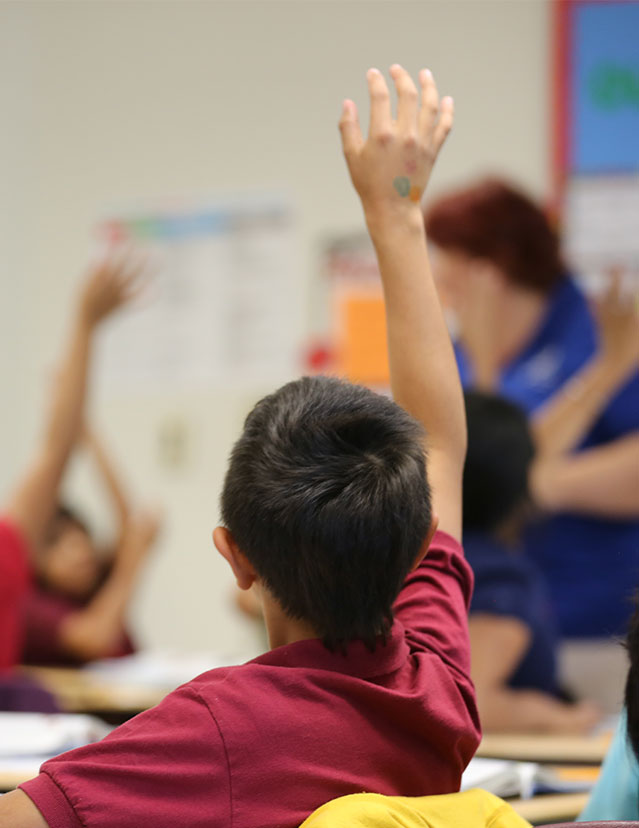Social-emotional leadership can help build positive mental health in students and teachers.
Historically, short periods of anxiety or depression were common in adolescence, while more prolonged periods were rare. However, recent years show a troubling increase in the number of adolescents with longer-term depression and anxiety.

Severe youth depression increased 28% over a five-year period.2

Self-harm and suicidal-ideation rates have more than doubled since 2008.4

A systematic review of 19 studies from 12 countries revealed that anxiety is increasing worldwide.3

39% of adolescents will experience an anxiety disorder.5

Adolescence is one of the most critical times for brain development. Stress and depression during this time can cause long-term learning deficits and decreased emotional regulation. When the body’s stress response is activated for long periods of time, the brain can’t develop normally. A child who has even one long-term experience with depression is far more likely to experience depression as an adult.
The following social and emotional skills are developed through positive mental health:6

According to the World Health Organization (WHO), schools are one of the most important settings to build children’s positive mental health because of:
Average annual hours of compulsory education per student, 2011:
| Primary Schools | 1,007 Chile (highest) |
470 Russia (lowest) |
943 United States |
791 OECD Average |
| Secondary Schools | 1,167 Mexico (highest) |
848 Czech Republic (lowest) |
1,016 United States |
907 OECD Average |
“For 75% of teens, school is the only place they spend time in
person with friends on a daily basis.”8
Schools can lay a protective foundation for a lifetime of mental health by guiding the development of social and emotional competencies. 26% fewer high-risk students developed anxiety disorders after social-emotional learning intervention compared with controls. SEL interventions effectively lower rates of non-clinical anxiety and depression, and build positive mental health.10
The Canadian Comprehensive School Health Framework11 outlines a foundation for building positive mental health with four pillars:

• Quality relationships among
staff and students.
• Emotional well-being of students.
• Condition of buildings and
surrounding grounds.

Resources, activities, and curriculum
that provide students with:
• Age-appropriate knowledge.
• Experiences that build their skills.
• Improvement to their health
and well-being.

Collaborations that support and advance
positive mental health among:
• School
• Students’ families.
• Surrounding community organizations.

School procedures and policies that:
• Promote health and well-being.
• Shape a respectful, welcoming,
and caring school environment.

Leader in Me Schools use key leadership practices to build a feeling of community, establish a common vision, and build trust and unity through regular routines and activities.
Teachers and students reported that after implementing Leader in Me, the “classroom became a safe environment where all students felt comfortable pursuing goals.”
Baldwin, M.A., Dr. Lodico, Dr. Voegtle, Bruce, Dr. Martone (2012). The College of Saint Rose.

Leader in Me integrates social and emotional learning schoolwide—from the classroom to the playground, and to families and home. As students learn valuable social-emotional skills they also apply these skills through public speaking, service learning, goal achievement, and student leadership roles, where they plan, organize,and lead classroom or schoolwide activities, routines, and special events.
“Overall, an emerging theme from the parental interviews was that the school used the leadership program to accentuate a child’s strengths, and positive reinforcement encouraged leadership and other desired behaviors.”
Dr. S. Evans (2014). Virginia Commonwealth University.

Because a student’s positive mental health is impacted largely by how well his or her needs are met, Leader in Me focuses on creating empowering support systems schoolwide, and through training and partnerships with families and the larger community.
“By utilizing a ‘whole-school initiative’ such as Leader in Me, the administrators were also able to include parents and community members in the initiative.”
Dr. N. Bryant (2016). Capella University.

Leader in Me is a whole-school improvement process that begins by building the professional and personal capacity of the adults in the school. The adults then lay the foundation of a socially, emotionally, and academically supportive school environment by modeling healthy attitudes and behaviors, and collaboratively creating systems that reinforce the development of students’ personal and interpersonal leadership.
Significant correlation (p<.01) between teachers’ beliefs about school vision of leadership and the 7 Habits, indicating that: “[teachers] not only believe that their students are leaders, but they envision them living the 7 Habits, as leaders would do.”
Dr. K. Cummins (2015). University of Louisiana at Lafayette.
REFERENCES
1. “Promoting Mental Health” (2004). World Health Organization. http://www.who.int/mental_health/evidence/en/promoting_mhh.pdf
2. “The State of Mental Health in America” (2017). Mental Health America. Nguyen, et al. http://www.mentalhealthamerica.net/issues/state-mental-health-america
3. “Are child and adolescent mental health problems increasing in the 21st century? A systematic review” (2014). Australian & New Zealand Journal of Psychiatry — Bor, W.; Dean, A.; Najman, J.; and Hayatbakhsh, R.
4. “Hospitalization for Suicide Ideation or Attempt: 2008-2015” (2018). Pediatrics. Plemmons G, et al.
5. “Any Anxiety Disorder” (2017). National Institute of Mental Health. https://www.nimh.nih.gov/health/statistics/anyanxiety-disorder.shtml
6. “The human face of mental health and mental illness in Canada” (2006). Public Health Agency of Canada.
7. “Making the Connection: Teen Health and Academic Achievement” (2017). Centers for Disease Control and Prevention. https://www.cdc.gov/features/health-academic-achievement/index.html
8. “Teens, Technology and Friendships” (2015). Pew Research Center. Lenhart, A.; Smith, A.; Anderson, M.; Duggan, M.; Perrin, A. http://www.pewinternet.org/2015/08/06/teens-technology-and-friendships/
9. “Child Anxiety Prevention Study: Impact on Functional Outcomes” (2017). Child Psychiatry and Human Development. Pella, J.; Drake, K.; Tein, J.-Y.; and Ginsburg, G.
10. “The positive impact of social and emotional learning for kindergarten to eighth-grade students: Findings from three scientific reviews” (2008). Collaborative for Academic, Social, and Emotional Learning. Payton, J.; Weissberg, R.P.; Durlak, J.A.; Dymnicki, A.B.; Taylor, R.D.; Schellinger, K.B.; and Pachan, M. https://www.casel.org/wp-content/uploads/2016/08/PDF-4-the-positive-impact-of-social-and-emotional-learning-for-kindergarten-to-eighth-grade-students-executive-summary.pdf
11. “Schools as a Setting for Promoting Positive Mental Health: Better Practices and Perspectives” (2010). Pan-Canadian Joint Consortium for School Health. Morrison, W.; Peterson, P. http://www.jcsh-cces.ca/upload/JCSH%20Best%20Practice_Eng_Jan21.pdf
12. Academic Leader in Me Research
a. Andersen (2011). St. John’s University. “The Effects of Formal Leadership-Lessons on the Emergence of Positive Social-Leadership Skills of Pre-Kindergarten Students.”
b. Baldwin, Lodico, Voegtle, Bruce, Martone (2012). The College of Saint Rose. “Leadership, Goal Setting, and Self- Regulation: An Action Research Study.”
c. Bryant, N. (2016) Capella University. “Administrators and Principals and the Implementation Process of the Leader in Me Initiative.”
d. Corcoran, Reily, and Ross (2014). John Hopkins University. “Achievement Outcomes of the Leader In Me (LiM) Program.”
e. Cummins (2015). University of Louisiana at Lafayette. “A Mixed-Methods Study on the Leader in Me Process: How Does Fostering Student-Leadership Capacity Influence Behavior, Efficacy, and Achievement?”
f. Evans (2014). Virginia Commonwealth University. “Making Leaders: Examining How Elementary School Students Develop an Understanding of Leadership and Show Emerging Leadership Tendencies.”
g. The National Health Services of Scotland and the Fife Council (2015). “Improving Wellbeing in Fife: 7 Habits of Highly Effective Teenagers, People and Families.”
h. Tidd (2016). Walden University. “Staff Perceptions of the Effect of the Leader in Me on Student Motivation and Peer Relationships in Elementary School.”